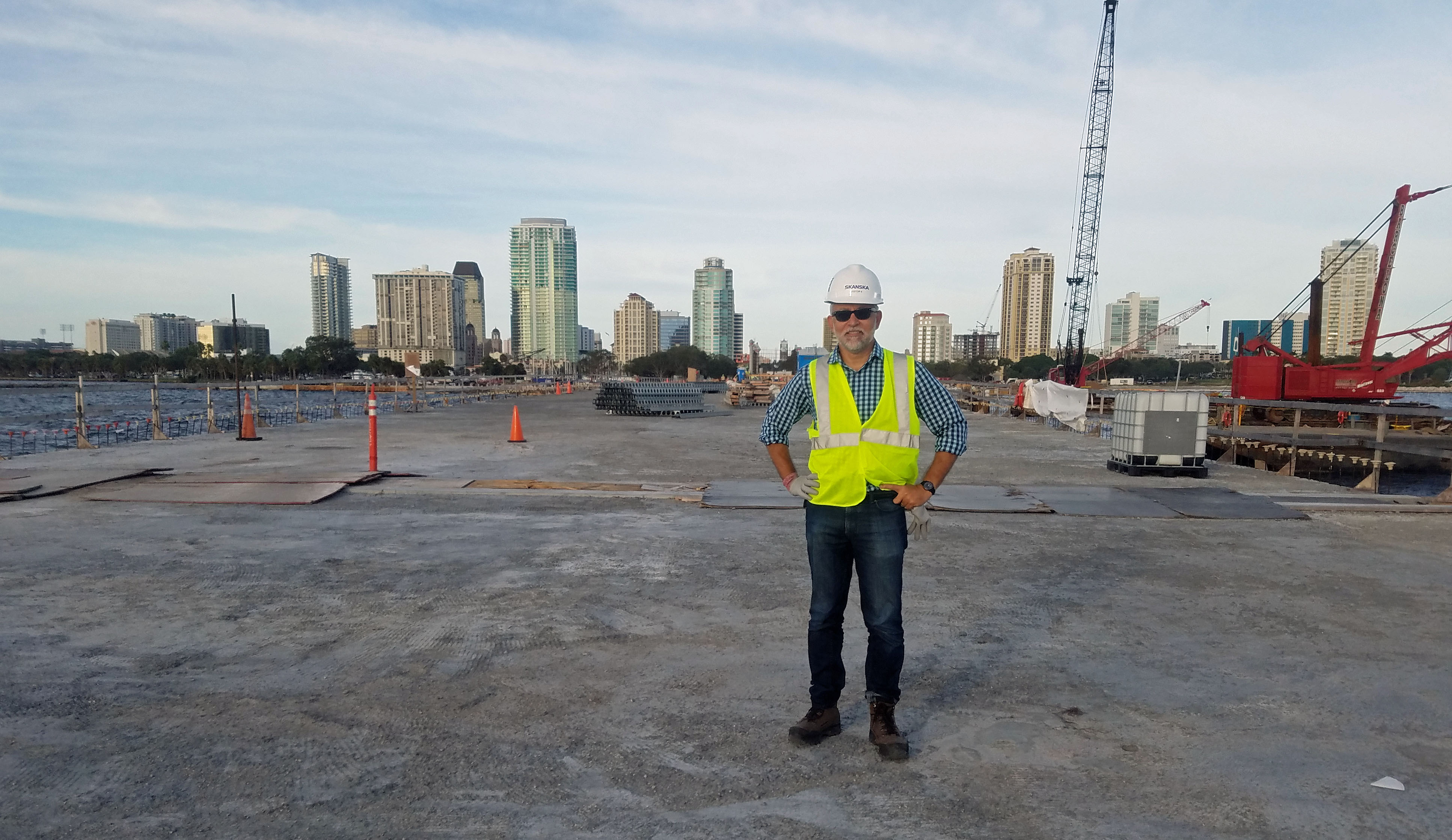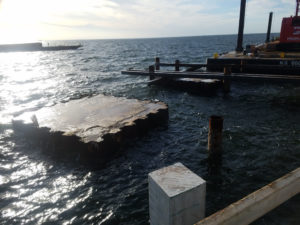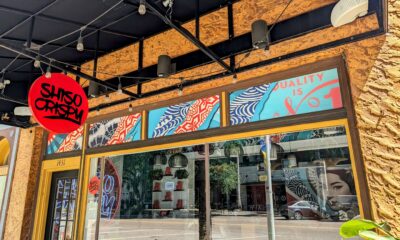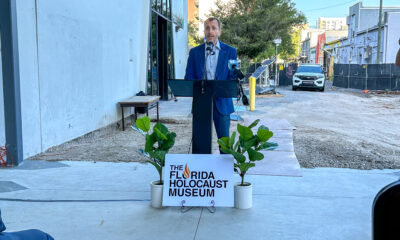Know
St. Pete Pier progress: Slow but steady, still on time

Every morning, St. Petersburg City Architect Raul Quintana takes his dog for a walk along the Tampa Bay waterfront. And every morning, the two of them stop at Vinoy Park for a gaze over at the St. Pete Pier, not quite a mile across the choppy blue water.
“It’s the most visible construction project in the city,” Quintana says. “I can see the progress, and I can see the way it’s going to turn out.” He watches the barges come and go, ferrying cranes and concrete along its 3,065 feet.
As a key member of the team steering the $76M project, Quintana enjoys taking notice of progress on the pier from a “civilian” perspective. “It helps me to personalize it a little bit differently than dealing with it on the construction and design side,” he explains.

The future location of the Coastal Thicket (north side), which will include a boardwalk through native Florida plants, trees and shrubs. The boardwalk will be illuminated at night.
Construction on the pier began in June 2017; if all goes according to plan, the unveiling will take place at the end of next year. Although much of the heavy lifting is done – all 425 concrete pilings have been driven into the seabed to their full depth, and the massively thick concrete pads for the all-important pier head have been poured – there’s not much there to look at right now.
Raul Quintana has the ability to see beyond the mounds of dirt, stacked concrete molds and towering collections of rebar and steel beams and picture the Education Center, the Coastal Thicket, the restaurants and the grassy event lawns. He knows precisely where the pylons will be placed for the Janet Echelman floating sculpture (over the entryway to the Pier Approach).
On a recent walking tour of the construction site with a Catalyst reporter, the pride was evident in Quintana’s voice. “The piers that have been here in the past have kind of been a statement of the values of that generation,” he said. “This pier is all about St. Pete in the 21st century. It’s been an honor for me to have been involved in it. Just wanting to see it done right, wanting it to be all that it can be so that my kids and my grandkids can enjoy it. And I’ll be able to look back and tell a story about it one day.”
Shade, he pointed out, is an important component of the new pier. From the Pier Approach to Spa Beach, shade trees, umbrellas and other structures will guard against Florida’s relentless sun. “It’s the experience of a park,” he said, “and the extension of a waterfront park system that’s already world-class.”

Looking towards Tampa.
Unlike the “Million Dollar Pier” (built in the 1920s) or its 1970s upgrade (known as the “Inverted Pyramid”), there won’t be a long, hot walk (or drive) from one end of the pier to the other. Rather than reward people for making the lengthy schlep, with a restaurant or a retail destination at the climax, there’ll be things to do – places to sit, eat and drink, play or admire the view – all along the way.
Although a tram will run continuously, no cars will be allowed past a certain point.
“The first pier was built for the automobile,” Quintana says. “To get people driving. In the ‘20s, the Gandy Bridge opened up – you could now drive from Tampa to St Pete! – and people started driving more. The ability to build something that you could drive out to was unique to that time.”
Environmental concerns were given priority as the designers and architects conceptualized the new pier; the University of Florida created a filtration system for the recycled water that will be used on the Approach lawns and trees, and another, even more sensitive system for the over-water section, which will only use potable water. The City is adamant that no recycled water, or contaminates of any sort, find their way in to the bay.
A large portion of the pier’s roadway width was removed, too, to allow sunlight to reach the beleaguered seagrass beds underneath (the seagrass will be part of a continuing study by Tampa Bay Watch, which has a city lease to operate the Education Center).
“Piers have always been a part of St. Pete. But a pier that ties more into the environment, and the future and what we’ve become, is what I think we’re trying to create here.”

At the apex of the pier, the massive caissons that once supported the “Inverted Pyramid” will form the foundation of the new fishing area.
One thing that hasn’t changed – and conceivably won’t ever – is the area reserved for fishing at the apex of the pier. A special deck, down a series of steps five or six feet below the concrete floor of the pier, is being laid on top of four huge concrete-and-steel caissons – the foundation, or “feet,” of the previous pier, which was otherwise demolished in 2017.
“You get closer to the water so you can fish,” said Quintana. “The environmental agencies prefer it that way. It’s a unique spot – it’s a dedicated fishing platform, which we’ve always had in the project.”
Find out everything about the new St. Pete Pier here.








